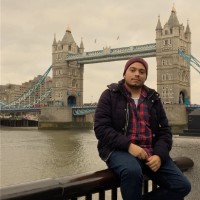Neurospheres (NS) cultures are valuable tools for deciphering the regulation of neural cell differentiation in vitro. However, their study is somehow restricted because NS primary cultures are difficult to transfect using conventional methods. Here, we propose a transfection protocol by using linear polyethylenimine (PEI) nanoparticles in order to develop a low-cost method that has minimal cell toxicity and maximal efficiency in delivery and expression of a reporter plasmid.
We synthetized PEIs of different molecular weights and evaluated their toxicity in NS cultures. The PEI of 22KDa was chosen for subsequent analysis, as it retained cell viability over 70% up to doses of 4ug/ml. A green fluorescent protein (GFP) expression vector was incubated with the selected polymer at different ratios. Analysis of PEI:DNA polyplexes by agarose gel electrophoresis revealed that best combination for complex formation was 0.8:1 ratio.
After NS generation from postnatal mice brains, dissociated cells were seeded at different densities and exposed to PEI:DNA polyplexes for two hours for preliminary evaluation of transfection. After 24 hours, a pulse of propidium iodide was performed to detect cell death. Cultures were fixed, nuclei were stained by Höescht and cells were analyzed for GFP expression. GFP+ cells were detected in all the conditions, although in a low proportion (5%). Optimization of other variables should be performed in order to improve transfection efficiency.
P#5
Optimization of linear polyethylenimine/DNA polyplexes transfection into murine neurosphere cultures.
Agustin Jesus Byrne
- Ciudad Autónoma de Buenos Aires,
- Argentina
- Agustín Jesús Byrne ¹
- , Yamila Azul Molinari ¹
- , Juan Manuel Lázaro Martínez ²
- , Paula Gabriela Franco ¹
- 1 Universidad de Buenos Aires. Facultad de Farmacia y Bioquímica. Departamento de Química Biológica. Cátedra de Química Biológica Patológica. Instituto de Química y Fisicoquímica Biológicas (IQUIFIB) (UBA-CONICET). Buenos Aires, Argentina.
- 2 Universidad de Buenos Aires. Facultad de Farmacia y Bioquímica. Departamento de Química Orgánica. Cátedra de Química Orgánica 2. Instituto de Química y Metabolismo del Fármaco (IQUIMEFA) (UBA CONICET). Buenos Aires, Argentina.

